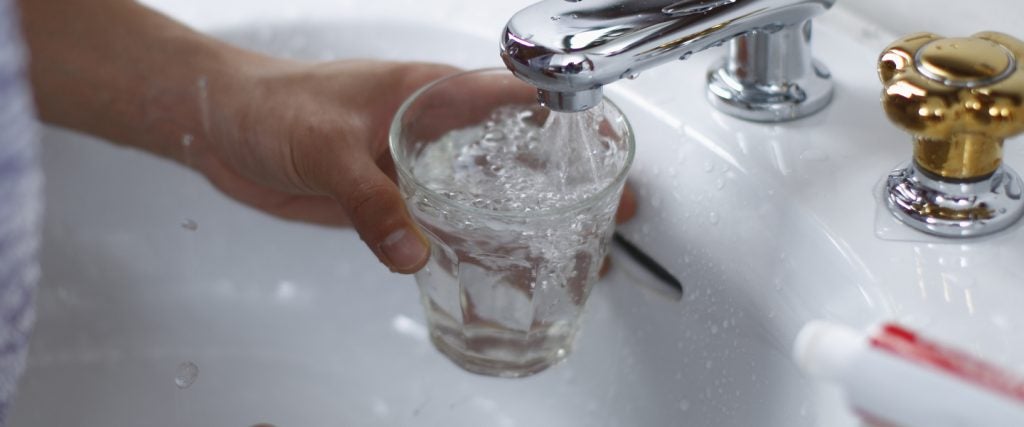The other night before going to bed, I was refilling my empty water glass in the sink, when a memory hit me. There was something about that cold bathroom tap water that reminded me of drinking tiny Dixie cups of bathroom water as a kid, like I was doing shots at a family-friendly happy hour. It was glorious. But was it also gross?
When you Google “is bathroom sink water safe to drink?,” the top results are alarming, to say the least, and some of the not-so-scientific sites have made me wonder if it’s possible I’ve acquired a taste for poop particles and bacteria. But the more research you do, the more likely you are to find engineers like Julius Ballanco who insist that “the research has proven rather conclusively that the water quality from a kitchen faucet and bathroom faucet is the same.”
While most other professional plumbers and engineers echo Ballanco, many also give valid reasons to be wary about drinking from the bathroom tap. For instance, Jake Romano, manager of the plumbing service John The Plumber, admits “there’s the risk of fumes, contaminants and splashback particles” in a bathroom setting. Just as you wouldn’t want to leave your toothbrush near the toilet because of aerosolized droplets of urine, feces and vomit that come up when you flush, you probably don’t want the tap for your drinking water to be near that for the same reason. “There may be some possibility of those fumes settling on the aerator of the faucet,” Romano explains. To avoid this, he recommends that you run your bathroom water a little longer before filling your cup.
On another note, even though most water pipes nowadays are made with copper and other safe materials, older buildings and homes may not have replaced lead piping completely. Since kitchens are more likely to receive these updates first, plumber Ryan Thompson admits, “It’s possible for the pipes transporting water to your bathroom to still use these old lead pipes.”
Mike Grijalva, owner of Sacramento Plumbing solutions, adds that old pipes that aren’t made of lead also carry contamination risks. “Another concern with old pipes is the tendency for bacteria and mold to collect and grow over time,” he explains. “This often happens in bathrooms, which tend to be very humid and present ideal conditions for mold growth.” Worse yet, as much as you can clean mold spores that accumulate on the surface of the faucet, you can’t see how far the mold goes back into the pipes. For this reason, Grijalva doesn’t recommend filling your cup from the bathroom sink.
But if you remain undeterred (guilty as charged), steer clear from hot bathroom water, which isn’t hot enough to kill off bacteria, and instead can create a comfortable temperature for it to grow. Plus, “cold water usually comes straight from the supply line, so contaminants can only be introduced in the pipes or fixtures,” Grijalva tells me. Whereas hot water passes through your hot water heater system, which can introduce a lot of contaminants like minerals and metals, “especially if your hot water heater is more than three years old and hasn’t been serviced annually.”
All of this said — and despite his own warnings about bathroom water — Romano says he never really worries much about drinking it himself. “I also checked with several members of my team to see if they’re uncomfortable drinking bathroom water, and everyone is very comfortable doing so,” he tells me.
Romano’s stamp of approval might not be fully reassuring, but I’m certainly still comfortable getting my water out of the bathroom sink when I’m craving a cold, nostalgic taste. And there’s no way it’ll stop me from drinking straight from the shower when I’m desperately hungover — crusty lead pipes be damned.

